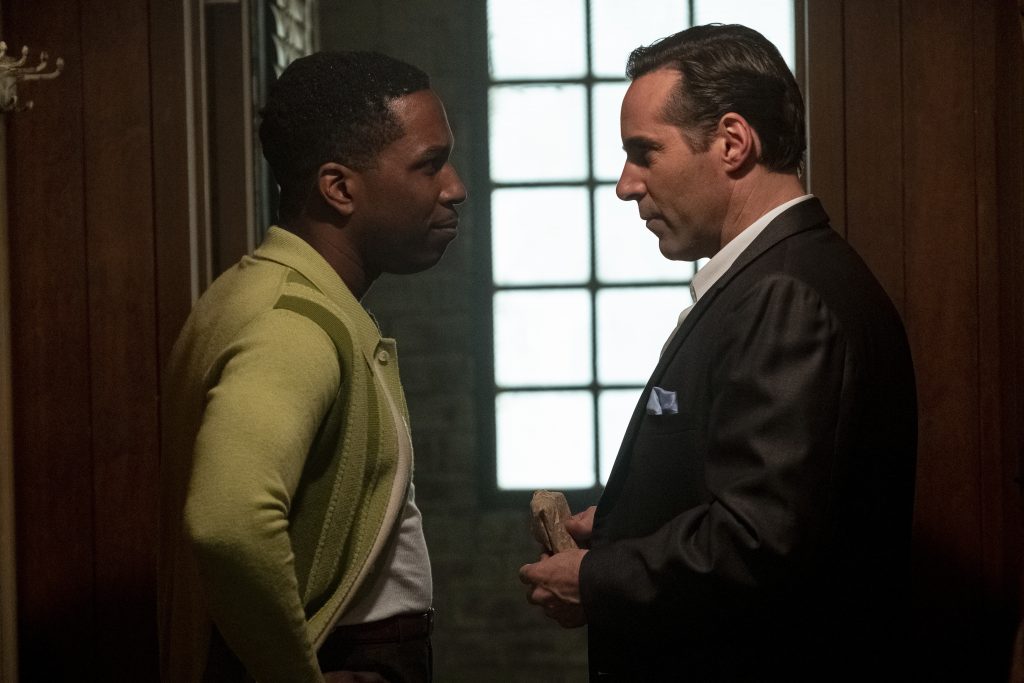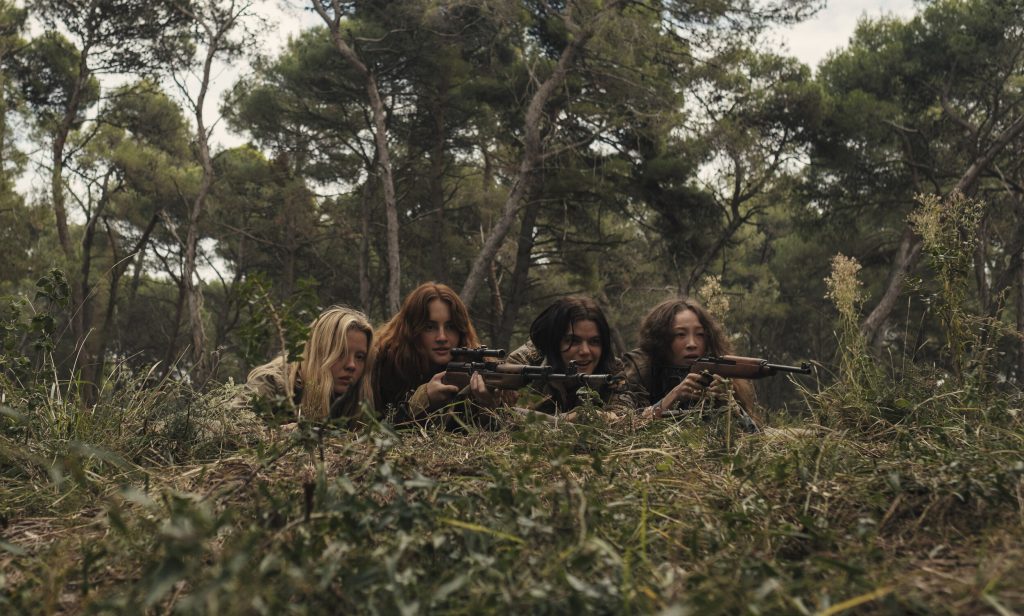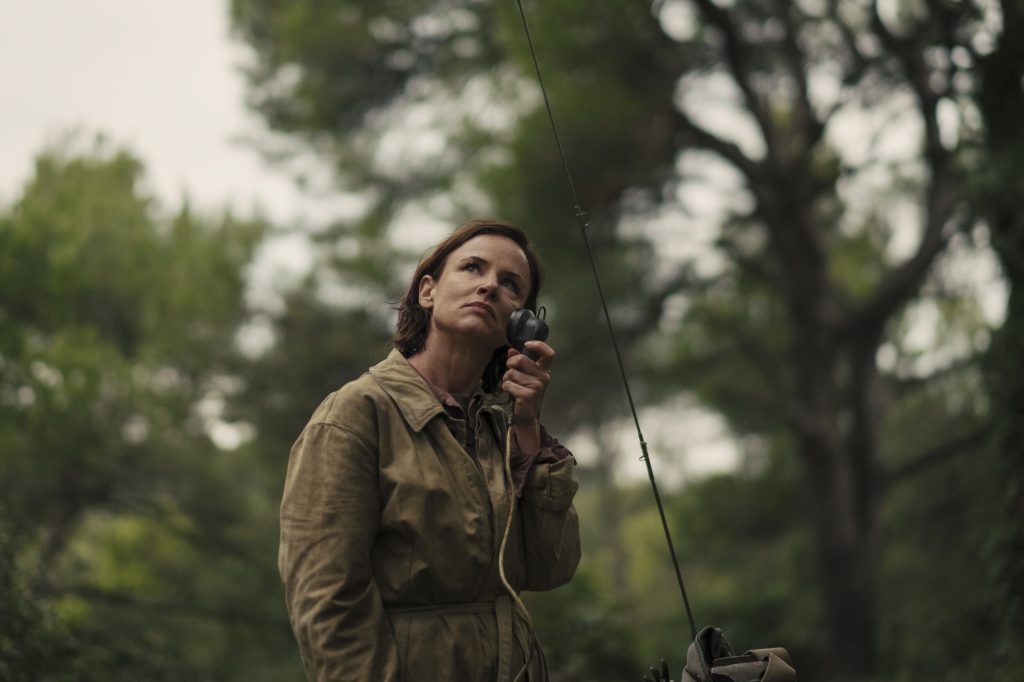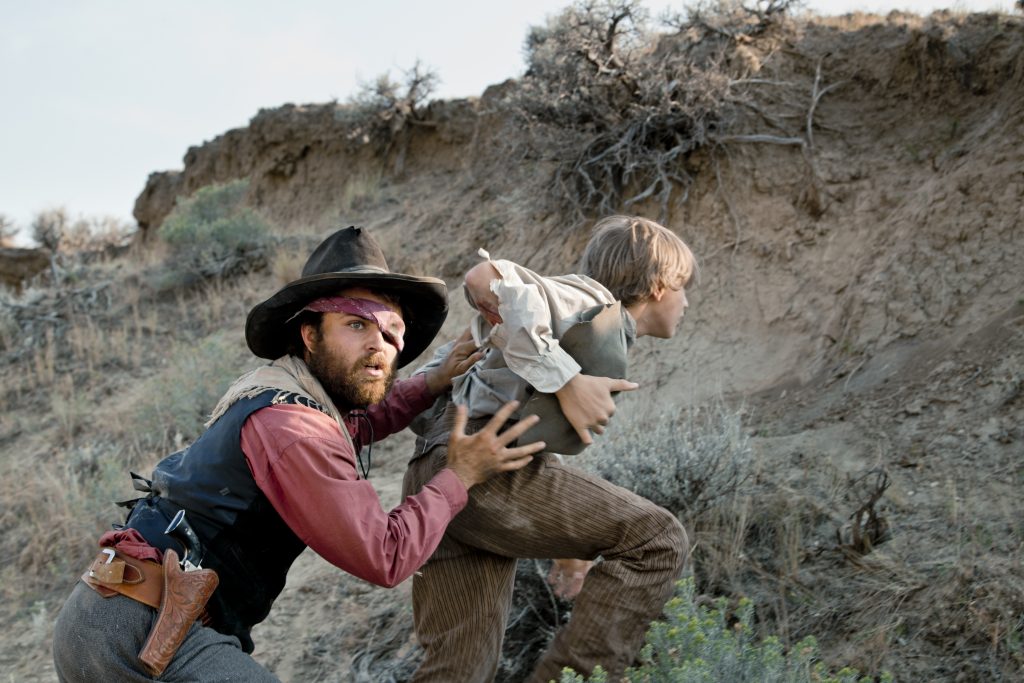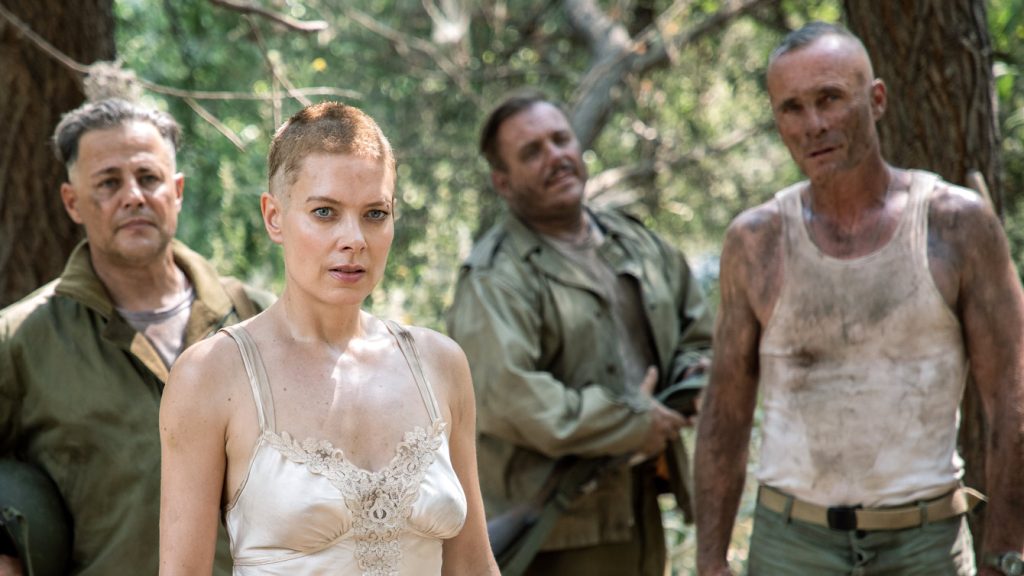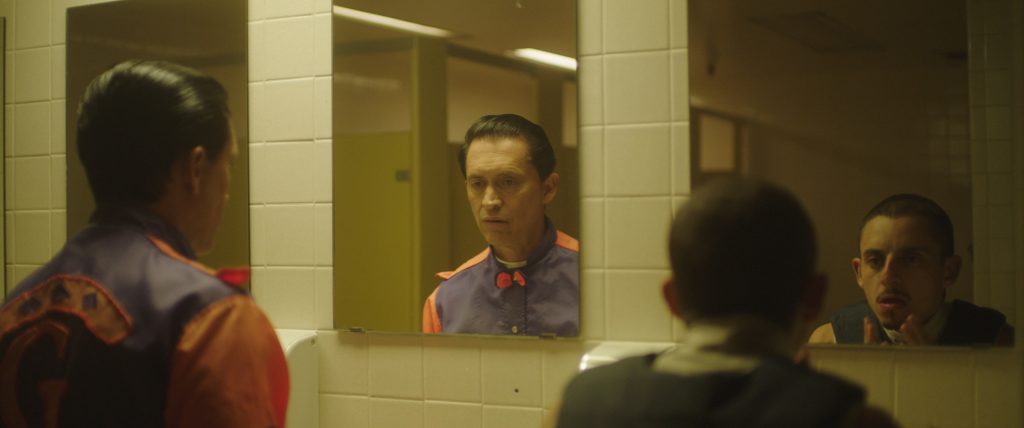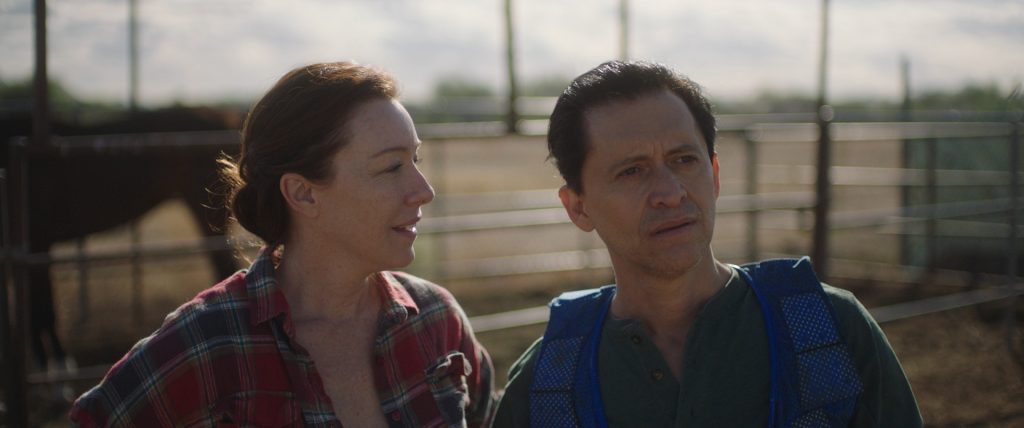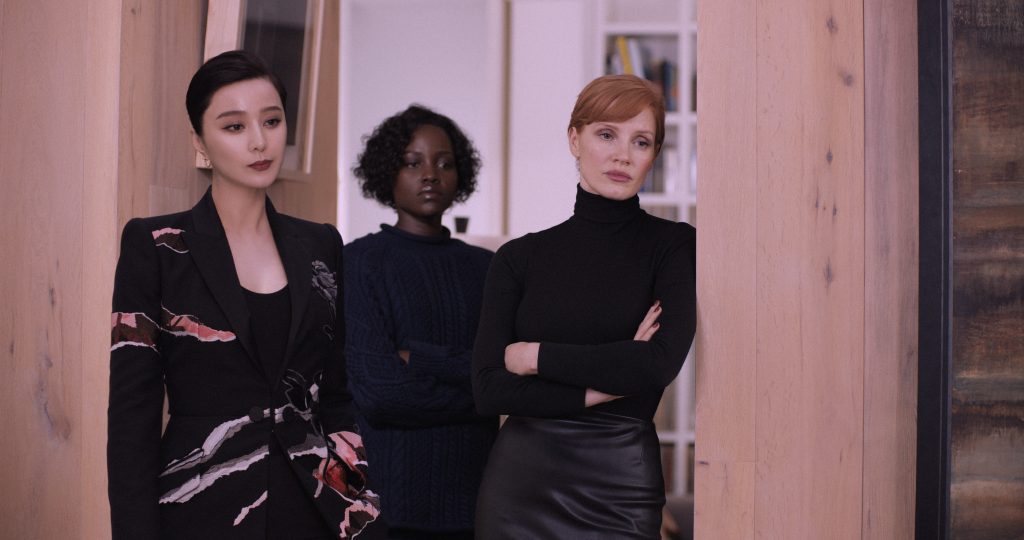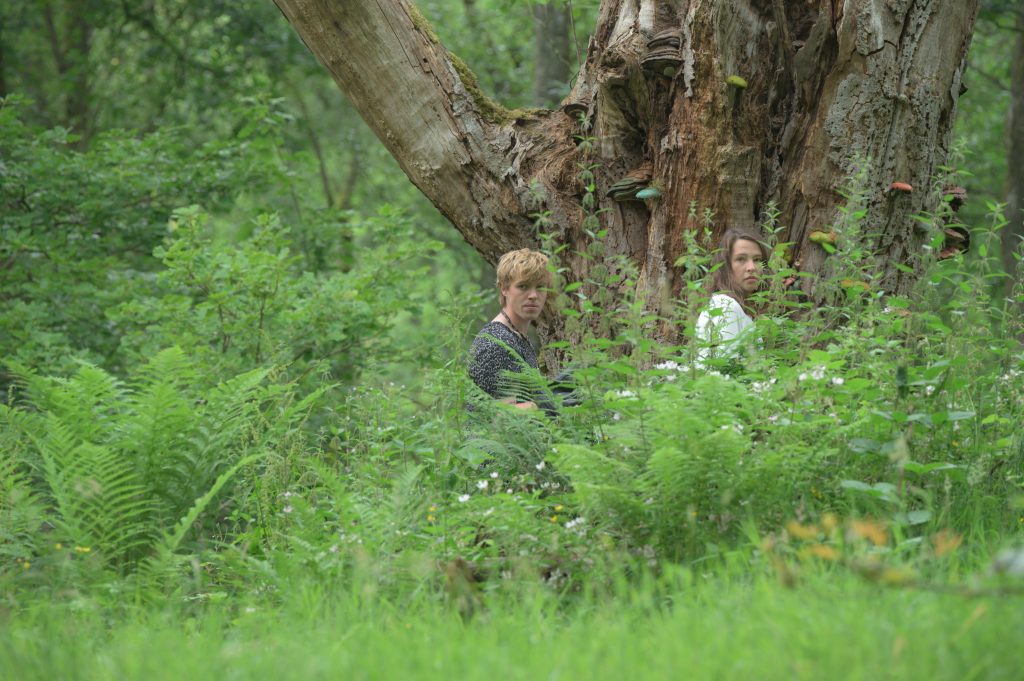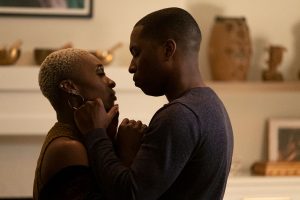January 8, 2022
by Carla Hay

“Kurt Vonnegut: Unstuck in Time”
Directed by Robert B. Weide and Don Argott
Culture Representation: The documentary “Kurt Vonnegut: Unstuck in Time” features an all-white group of people (scholars, book publishers, family members and fans) discussing the life and career of celebrated American writer Kurt Vonnegut.
Culture Clash: Vonnegut had high points and low points in his life, including getting criticism about his relevancy, his artistic merit and choices he made in his personal life.
Culture Audience: Besides obviously appealing to Vonnegut fans, “Kurt Vonnegut: Unstuck in Time” will appeal primarily to people who are interested in documentaries about writers who made their biggest impact on pop culture in the 1960s and 1970s.
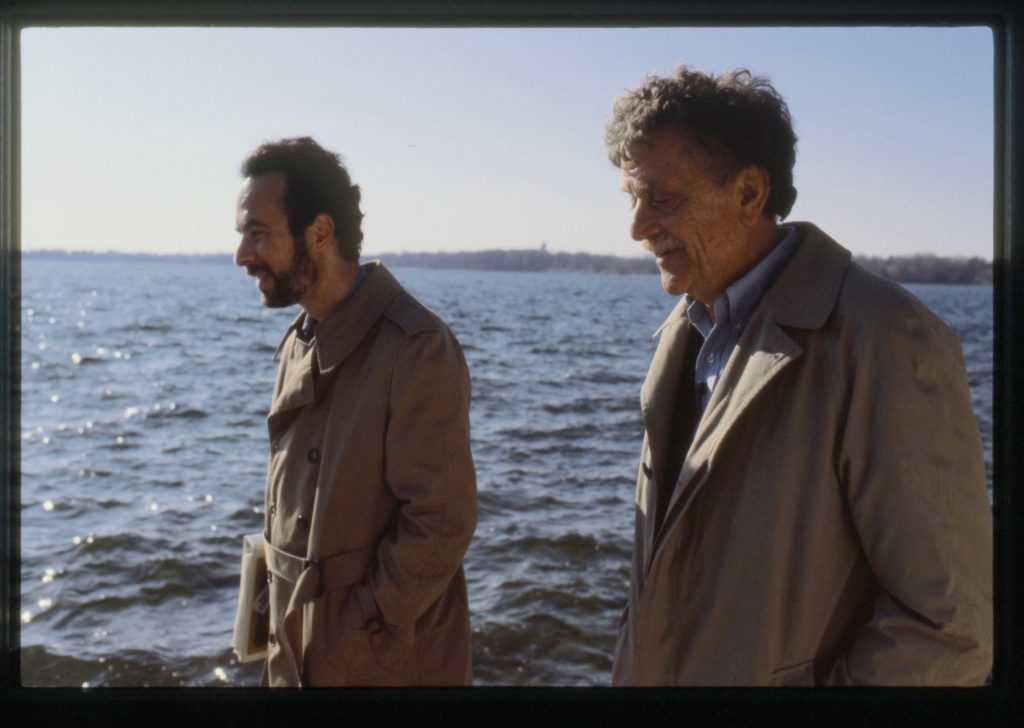
“Kurt Vonnegut: Unstuck in Time” is a documentary that’s a hybrid of a Kurt Vonnegut biography and co-director Robert B. Weide’s personal narrative of his longtime friendship with Vonnegut. Weide could have inserted himself a little less in this movie, but it’s still a fascinating portrait of this influential author. Weide co-directed “Kurt Vonnegut: Unstuck in Time” with experienced documentarian Don Argott, but the movie very much has the tone that it’s Weide’s singular vision that brought this movie to fruition. If you didn’t notice the film credits to see that there are two directors of this documentary, it would be easy to assume that only Weide directed it, since he doesn’t really acknowledge his co-director in any part of his narration on screen or in voiceover.
One of the main reasons to see “Kurt Vonnegut: Unstuck in Time” is the treasure trove of previously unreleased footage that Weide was able to get when he interviewed Vonnegut off and on over the years. Vonnegut died in 2007, at the age 84, from brain injuries that he sustained during a fall. Weide (who frequently appears in the documentary footage) says on camera that he was 23 years old (circa 1982) when he first approached Vonnegut to do a documentary about Vonnegut, who would have been 59 or 60 years old at the time.
Some of this footage includes an informal 1988 interview that Vonnegut did on a train to Buffalo, New York. However, it wasn’t until 2014 that Weide says he began to seriously move forward in completing the documentary. In the documentary, Weide also shares several personal letters and voice mail messages that he got from Vonnegut over the years. The documentary remained an unfinished project for Weide that he would come back to off and on, but he had a difficult time completing the film. In the meantime, Weide went on to other projects in film and television, as a screenwriter, producer, director and editor.
Weide received an Oscar nomination for Best Documentary Feature for 1998’s “Lenny Bruce: Swear to Tell the Truth,” which also won a Primetime Emmy Award for Outstanding Achievement in Non-Fiction Programming – Picture Editing. Weide has won two other Primetime Emmy Awards: Outstanding Informational Special (for being a producer of 1986’s “W.C. Fields: Straight Up”) and Outstanding Directing for a Comedy Series (for “Curb Your Enthusiasm”), a prize he received in 2003. Weide was also the screenwriter and a producer for the 1996 feature-film adaptation of Vonnegut’s 1961 novel “Mother Night.”
Weide comments on this long journey to finish this Vonnegut documentary: “This was going to be a conventional documentary … I don’t even like documentaries where the filmmaker has to put himself in the film. Who cares? But when you take almost 40 years to make a film, you owe some kind of explanation.”
The documentary then goes into how Weide became a Vonnegut fan in the first place: He first discovered Vonnegut when Weide was a 16-year-old student at Sunny Hills High School in Fullerton, California. He had a teacher named Valerie Stevenson, who assigned her class to read Vonnegut’s 1973 best-selling novel “Breakfast of Champions.”
“Breakfast of Champions” is a story about of the meeting of two very different men—science-fiction writer Kilgore Trout and rich businessman Dwayne Hoover—and how this meeting results in a series of twists and turns. “Breakfast of Champions” touched on themes of class differences, mental illness and pre-determined destiny versus free will. It was a combination of science fiction and satire that was highly influential at the time.
Weide’s former teacher Stevenson comments in the documentary about making “Breakfast of Champions” required reading for her students: “Looking back now, as an educator of many years, I’m just horrified that I did it. It’s a pretty edgy book and kind of iconoclastic.” Weide, however, says that he’s glad he discovered Vonnegut in this way: “He was the guy who made me think, ‘He thinks what I think about the world.'”
Weide’s fascination with Vonnegut led to Weide teaching an informal class about Vonnegut while Weide was in his last year of high school. Weide says about this class: “It was like a very cool Vonnegut reading club.” Weide puts a lot of emphasis that a part of him still feels like that star-struck teenager who discovered Vonnegut for the first time. More than once, Weide’s narration says some variation of, “If someone had told the 16-year-old me that I would be hanging out with Kurt Vonnegut and doing a documentary about him, I wouldn’t have believed it.”
The parts of the documentary that are essentially Vonnegut’s biography do a fairly good job of describing his life and career, even though there isn’t anything that die-hard Vonnegut fans don’t already know. The documentary includes interviews with Vonnegut biographers (such as Jerome Klinkowitz, Gregory Sumner, Ginger Strand and Rodney Allen) to describe various points of Vonnegut’s life.
Born in Indianapolis on November 11, 1922, Vonnegut was proud of his Midwestern roots, even though he spent most of his literary career living in the Northeast. Klinkowitz says of Vonnegut’s parents Kurt Vonnegut Sr. and Edith Vonnegut: “Kurt’s mother was [emotionally] distant and really had her own mental problems. His father was not the warmest, fuzziest father in the world. He was a good father and a serious architect.”
Of all the people in the family, Kurt Jr. was closest to his older sister Alice, nicknamed Allie, who was five years his senior. Kurt Jr. also had an older brother named Bernard, nicknamed Bernie, who was eight years older than Kurt.
Klinkowitz says of Allie: “She substituted for Kurt’s mother. I think that [Allie] gave him the nurturing and the love he was not given.” The documentary has some brief, exclusive footage of Bernie, who died in 1997. Weide mentions that he became close to Bernie while making the film.
The Great Depression was financially devastating to Kurt and his family. Their father had problems finding work, and they had to downsize from a middle-class house to a cramped apartment. Kurt came from a family of architectures (he claims one of his ancestors invited the panic door bar), so his career in creative writing was considered somewhat of a radical departure.
In a documentary interview, Kurt says of his childhood: “I wish my parents were happier than they were. I think it was largely my mother’s unhappiness that made the Depression harder on all of us.”
Kurt’s writing skills were honed at Shortridge High School in Indianapolis, where he was co-editor of the school’s newspaper. In a documentary interview, Kurt describes Shortridge as “an extraordinary high school” that was “better than any university” he attended. That’s a huge compliment, considering that he attended Cornell University, Carnegie Mellon University, the University of Tennessee at Knoxville and the University of Chicago.
Before he a received dual bachelor’s degree and master’s degree in anthropology from the University of Chicago, he enlisted in the U.S. Army during World War II. Kurt had the harrowing experience of being a prisoner of war in Germany. Kurt survived the 1945 bombings in Dresden by hiding in a slaughterhouse. His war traumas later became the basis for his breakthrough sixth novel, “Slaughterhouse-Five,” which was first published in 1969. The subtitle of this documentary comes from this “Slaughterhouse-Five” line: “Billy Pilgrim has become unstuck in time.”
Vonnegut’s biggest champion, long before he became a famous writer, was his first wife, Jane Marie Cox Vonnegut, whom he married in 1945. Kurt and Jane were high-school sweethearts who both attended the University of Chicago. Jane was the one who pitched Kurt to magazines and became his unofficial agent in the early years of his career.
Kurt and Jane had three kids together: Edie, Nanny and Mark. All of the children are interviewed in the documentary. They describe their father as highly creative but not very affectionate and often impatient with them. Mark says of his father: “His attempts to work at regular jobs did not go well.”
During the early years when Kurt couldn’t get work as a writer, the documentary doesn’t adequately explain how the family was surviving when Kurt was frequently unemployed. It’s not really mentioned if Jane worked outside of the home to contribute to the household income. For a while, Kurt worked at General Electric, but he quit to become a full-time writer. Kurt and his family then moved from Schenectady, New York, to Barnstable, Massachusetts.
Kurt wasn’t an overnight sensation by any means: His earliest years as a writer were steeped in rejections and poverty-level incomes. He got his start in professional fiction writing by doing short stories for magazines. He became a novelist when magazines began to decrease publishing of short stories, as TV became more popular.
Tragedy struck in 1958, when Kurt’s beloved sister Allie died of cancer just two days after her husband, James Carmalt Adams, died in a train accident. The couple’s orphaned sons—Peter, James, Kurt (nicknamed Tiger) and Steven—were adopted by Kurt and Jane Vonnegut. The four brothers, who are interviewed in the documentary, admit that they were quite the handful because they were troublemaking hellraisers in their youth.
Nanny comments on how Allie’s death affected Kurt: “I think Allie’s death was the biggest loss in his life.” Nanny and Edie also say that their father never talked about his prisoner-of-war experiences and tended to downplay how any of this trauma affected him. His daughters say that they had to find out about everything by reading “Slaughterhouse-Five.”
Edie and Nanny share vivid memories of their father chainsmoking, playing Muzak and hunched over his typewriter in his home office. He was often so focused on his work, he would get upset and yell at the kids if he thought they were being so loud that it would distract him from his work. They say his angry outbursts weren’t really abusive, but they could be frightening.
His nephew/adopted son Kurt “Tiger” Adams remembers: “He was moody. You had to be on guard, so as not to get his wrath.” Nanny says that her father was not “cuddly” with his own children, but he was cuddly with the family dog. And things were so financially tough for Kurt in those early years, Mark says that when he was 12, his father asked to borrow $100 from Mark that Mark had saved from his part-time job a newspaper delivery boy.
In public and in his work, Kurt had the persona of a witty, politically liberal raconteur with a sarcastic and sharply observant sense of humor about the best and worst of society. When his career as an author began to wane in the 1980s and beyond, he became in demand for public speaking appearances. The documentary includes archival clips of Kurt giving commencement speeches at university graduation ceremonies.
“Kurt Vonnegut: Unstuck in Time” has such a laudatory tone that the movie doesn’t really press Kurt on the issue of Kurt doing what many married men do when they become rich and famous: They divorce their wife (usually the spouse who was with him before he became rich and famous) for a younger woman to have more of a celebrity lifestyle. This type of divorce is often a sign of a mid-life crisis.
Several people in the documentary say that’s what happened when Kurt began an extramarital affair with photographer Jill Krementz, whom he eventually married in 1979. Kurt and Jill lived in New York City until his death. Kurt’s adult children say that when he divorced their mother Jane, it was devastating to the family, but that Jane (who eventually remarried, to author Adam Yarmolinsky) refused to be bitter about the divorce, and remained friendly with Kurt until her death in 1986.
Kurt’s widow was not interviewed for this documentary. However, his son Mark has this to say about the affect that Kurt’s celebrity status might have had on decisions that Kurt made: “I think fame is a horrible, destructive thing to do to people.” Some people in the documentary also hint that Kurt’s second marriage was very unhappy in the final years of his life, but this documentary’s filmmakers chose not to go into further details.
Instead, Weide talks about his own marriage to his wife, actress Linda Bates, whom he met in 1994. Weide says that Kurt was always interested in what was going on in Weide’s love life, and he encouraged Weide to propose to Linda when Weide was hesitant on if he should take the relationship to the marriage level. In the documentary, Weide also shows the wedding gift he got from Kurt: two Victorian candlesticks that are replicas of the same candlesticks that Kurt gave as wedding gifts to his own children. And there’s a segment toward the end of the documentary about Linda’s battle with progressive supranuclear palsy.
Some viewers might be turned off by so much of Weide’s personal life being put in a documentary about Kurt Vonnegut. However, it serves as an example of how difficult it can be for documentarians to remain objective when they become close friends with a person who’s the focus of their documentary. Their lives become intertwined with the documentary subject’s, and it’s hard to separate the two. At least Weide admits this bias up front.
One of the best scenes in the documentary is when Kurt (who graduated from high school in 1940) goes to his 60th class reunion in 2000. He talks about World War II to a man who was a former classmate and who lost one of his eyes in combat during the war. In true Kurt Vonnegut fashion, he asks the man: “Have you considered suing the government?” The man says no.
Because the documentary has a lot of previously released footage that was filmed decades ago, some of it looks very dated, including most of the interview footage with Kurt’s children. One of the Vonnegut admirers who’s interviewed is TV news journalist Morley Safer, who died in 2016. And the types of people who are interviewed aren’t very diverse. Even though the documentary mentions that Kurt got backlash, starting in the late 1970s, for having declining creativity in his later works, the documentary doesn’t interview anyone with these criticisms.
Aside from family members and biographers, most of the people interviewed in the documentary are his friends from the publishing world, such as book publisher Dan Simon; writer Sidney Offit; In These Times magazine editor Joe Bleifuss; author Dan Wakefield; and author John Irving, who was one of Kurt’s students when Kurt was a writing professor at the University of Iowa. Other people interviewed are self-professed Vonnegut fans, such as actor Sam Waterston and book critic Dave Ulin.
Several of Kurt’s novels were made into movies, but they don’t get nearly as much screen time in the documentary as “Mother Night,” the ill-fated flop that Weide was involved in making. It’s an example of how Weide inserts himself a little too much in “Kurt Vonnegut: Unstuck in Time.” There’s some footage of Kurt on the “Mother Night” film set, but it would’ve been better to get Kurt’s candid thoughts on his more high-profile novels that were made into movies.
Fortunately, Kurt Vonnegut had such a larger-than-life personality, it overshadows any ego-driven decisions made by the documentary’s director. Even if people watching this documentary never read any Kurt Vonnegut books, they will get a very good sense of who he was as a person. It’s by no means a whitewash of his life, but you get the feeling that some aspects of his life got the “glossed-over” treatment in this movie.
In his speeches and interviews, Kurt Vonnegut often talked about how the world is full of lonely people. He would quip: “My advice: Find an extended family.” Through Weide’s very personal lens, this documentary gives viewers an idea of what it was like to be part of Vonnegut’s extended family.
IFC Films released “Kurt Vonnegut: Unstuck in Time” in select U.S. cinemas, on digital adn VOD on November 19, 2021.


